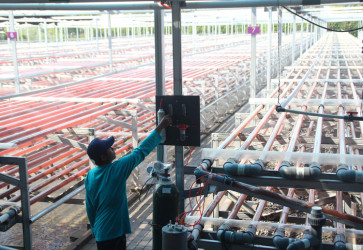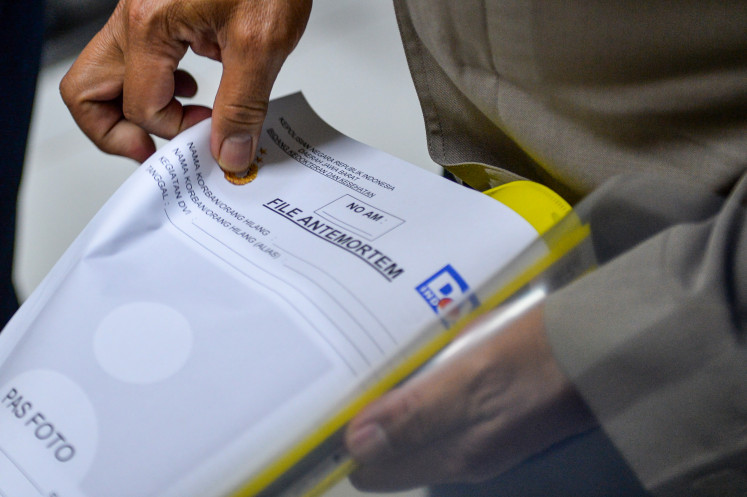PLN still relies on coal as LNG remains expensive
It seems that Indonesia’s objective to lower its reliance on coal as a main energy source to generate power remains high in the sky, given its lower price compared to other energy sources, such as liquefied natural gas (LNG)
Change text size
Gift Premium Articles
to Anyone

I
t seems that Indonesia’s objective to lower its reliance on coal as a main energy source to generate power remains high in the sky, given its lower price compared to other energy sources, such as liquefied natural gas (LNG).
The price of electricity generated from LNG is still double the price of coal-powered electricity, said PLN system planning manager Arief Sugiyanto.
“Coal-fired power plants [PLTU] can supply electricity at a price of 6 US cents per kilowatt hour [kWh], but the LNG-electricity price is double that at 12 cents per kWh,” he stated on Thursday.
There were factors of logistic costs that caused the price discrepancy, he added, as LNG transportation from the upstream was pricier compared to coal.
As a result, PLN has steeply reduced its LNG purchase from state energy giant Pertamina to only 11 cargoes from the 17 projected for 2019. Earlier this year, the firm said it would buy just six cargoes of LNG but the Upstream Oil and Gas Regulatory Task Force (SKKMigas) announced last week that PLN will take another five cargoes throughout 2019.
“It [PLN] decided to take it again [five cargoes] as the price is now lower than the initial one,” SKKMigas deputy for finance and monetization Arief Setiawan Handoko said.
Of the remaining six cargoes already produced by Pertamina, two will be taken back by the energy giant and its subsidiary Pertagas, while one was sold to BP Singapore while three cargoes were curtailed.
At the same time, PLN also projected its demand for coal to generate power would jump 12.37 percent next year to 109 million tons. The increase was needed to supply its two new PLTUs in Java with a capacity of 2 gigawatts (GW), namely Java-7 and Java-8.
The two power plants are set to commence operations in September at the soonest.
When revealing the new electricity procurement plan (RUPTL) to the public in March, Energy and Mineral Resources Minister Ignasius Jonan said coal-fired power plants would still dominate the country’s electricity supply at 54.6 percent.
“The use of coal in our power grid is still high at 54.6 percent from the total 100 to 110 gigawatts in 2025. Meanwhile, the contributions of renewable energy and gas stand at 23 and 22.2 percent respectively,” he said.
Such a plan drew criticism from environmentalists who had warned that it would cause massive pollution.
Even though the price of LNG-powered electricity could not compete with that of coal, Arief gave assurances that PLN would increase its LNG consumption for power generation to compensate for the lower demand for piped gas next year.
PLN’s total gas input will be down 5.6 percent to 486 billion cubic feet (bcf) next year with LNG demand set to increase 22 percent to 221 bcf, he said. Meanwhile, piped gas input will fall 20 percent to 262 bcf due to the low supply from the South Sumatra — West Java Pipeline, among other things.
Global energy think tank Wood Mackenzie previously projected Indonesia’s higher demand for gas to generate its power. Overall, it forecast demand for LNG in Southeast Asia would grow over five times by 2040 to 236 million tons per year.
“Almost half of the demand will come from the two major markets of Indonesia and India,” Wood Mackenzie principal analyst Asti Asra said in an e-mail recently. “Indonesia’s LNG demand is coming from the power sector.”









